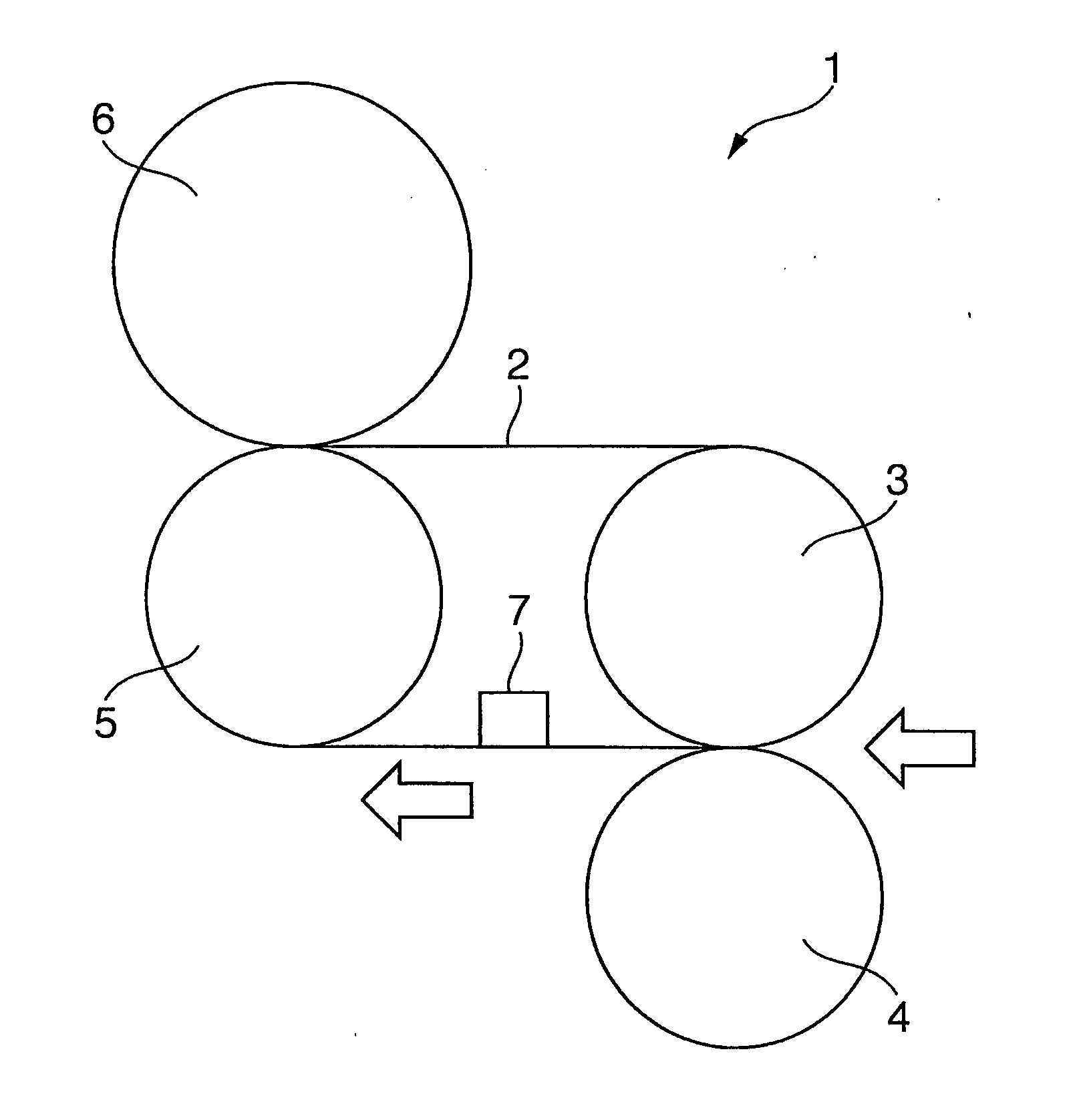Electrophotographic image-receiving sheet and process for image formation using the same
a technology of electrophotography and image-receiving sheet, which is applied in the direction of photomechanical equipment, instruments, originals for photomechanical treatment, etc., can solve the problems of sheet-feed paper not being fed or transported, adhesion between sheets or contact problems, etc., to achieve excellent smoothness and gloss, improve the releasability of electrophotographic image-receiving sheet and toner. the effect of improving the quality
- Summary
- Abstract
- Description
- Claims
- Application Information
AI Technical Summary
Benefits of technology
Problems solved by technology
Method used
Image
Examples
example 1
Preparation of Support A
[0190] Broad-leaved (hardwood) bleached kraft pulp (LBKP) was beaten to a Canadian standard freeness (CSF) of 300 ml using a disk refiner, and was adjusted so as to have a fiber length of 0.58 mm. The following additives were added to the pulp stock in proportions shown below based on the mass of the pulp.
AdditiveAmount (%)Cationic starch1.2Alkyl ketene dimer (AKD)0.5Anionic polyacrylamide0.3Epoxidized fatty acid amide (EFA)0.2Polyamide-polyamine-epichlorohydrin0.3
* In the alkyl ketene dimer (AKD), the alkyl moiety is derived from fatty acids mainly containing behenic acid. In the epoxidized fatty acid amide (EFA), the fatty acid moiety is derived from fatty acids mainly containing behenic acid.
[0191] Raw paper having a basis weight of 150 g / m2 was then made from the resulting pulp stock using a Fourdrinier paper machine. In this process, 1.0 g / m2 of polyvinyl alcohol (PVA) and 0.8 g / m2 of CaCl2 were added to the raw paper at some midpoint in a drying zo...
example 2
[0197] An electrophotographic image-receiving sheet was prepared in the same way as in EXAMPLE 1, except that 3 parts of FLO-BEADS CL-2080 (available from Sumitomo Seika Chemical Co., Ltd.; average particle diameter: 12 μm, melting point: 105° C.) was added to the coating solution for the toner image-receiving layer.
example 3
[0198] An electrophotographic image-receiving sheet was prepared in the same way as in EXAMPLE 1, except that 5% of FLO-BEADS CL-2080 (available from Sumitomo Seika Chemical Co., Ltd.; average particle diameter: 12 μm, melting point: 105° C.) was used instead of the titanium oxide dispersion in the coating solution for the toner image-receiving layer.
PUM
| Property | Measurement | Unit |
|---|---|---|
| Thickness | aaaaa | aaaaa |
| Thickness | aaaaa | aaaaa |
| Angle | aaaaa | aaaaa |
Abstract
Description
Claims
Application Information
 Login to View More
Login to View More - R&D
- Intellectual Property
- Life Sciences
- Materials
- Tech Scout
- Unparalleled Data Quality
- Higher Quality Content
- 60% Fewer Hallucinations
Browse by: Latest US Patents, China's latest patents, Technical Efficacy Thesaurus, Application Domain, Technology Topic, Popular Technical Reports.
© 2025 PatSnap. All rights reserved.Legal|Privacy policy|Modern Slavery Act Transparency Statement|Sitemap|About US| Contact US: help@patsnap.com


